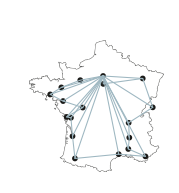
Coordination
Partners
Objectives
The Al-Chimie joint technological network addresses scientific and technical issues related to various natural or anthropic chemical contaminations that may affect food safety in the context of changing farming and food processing practices, and climate change. It brings together players from various industries that intervene throughout the food production and supply chain.
Recognised by the Actia and Acta networks, the Al-Chimie joint technological network was launched on 1 January 2020 for a five-year period.
Actions
The development of analytical expertise in the identification, characterisation, quantification, and monitoring of chemical contaminants from the field to the finished product.
The anticipation of food crises through the acquisition of reference data on new contaminants in terms of typology and cases, and the monitoring of emerging contaminants.
A reduction in the contamination of soil and crops.
The consideration of climate change, changes to farming and technological practices influenced by societal demand, and manufacturers’ choices, in evaluating the risk of contamination.
Improving the understanding and ranking of risk factors associated with the contamination of plant- and animal-based (eggs, milk, meat) foods by chemical contaminants through the use of predictive models on the transfer and transformation of contaminants.
The improvement of our understanding of the nature of high-risk chemical contaminants, their sources, the processes, and levers of contamination, along the production and supply chain, taught as part of technical teaching, training, and advice to farmers.

The dissemination of research results and the transfer of know-how and innovations to professionals through the organisation of seminars and conferences on specific themes.




